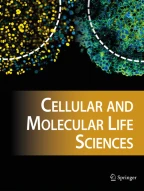Résumé
La plupart des longueurs expérimentales concernant les forces fondamentales dans le nucleus sont des multiples intégraux de la longueur d'onde Compton,λ 0, du proton, oùλ 0=h/m 0 c=1.32×10−13 cm (qui peut ainsi s'appeler un « compton »). Ces longueurs comprennent la portée effective des interactions des nucléons, et les amplitudes de dispersion.
On a également trouvé par différentes méthodes que le radius d'unité,R 0, du nucleus se situe entre 1,0 et 1,5 × 10−13 cm. Il semble donc que le vrai radius du proton peut bien être sa longueur d'onde Compton.
Explore related subjects
Discover the latest articles, news and stories from top researchers in related subjects.Literatur
This paper was presented at the New York Meeting of the American Physical Society, January 30, 1958.
More recent values, however, are 3.78 × 10−13 cm [D. J. Hughes,Pile Neutron Research (Addison-Wesley Publ. Co., Cambridge, Mass. 1953)], and 3.80 × 10−13 cm [A. T. Stewart andG. L. S. Squires, Phys. Rev.90, 1125 L (1953)].
R. D. Evans,The Atomic Nucleus (Mc-Graw Hill Book Co., New York 1955), Chapt. 10.
H. A. Bethe,Elementary Nuclear Theory (John Wiley and Sons, Inc., New York 1956), Chapt. 13 and p. 96.
O. Miyatake, Progr. theor. Phys., Osaka7, 285 (1952).
R. D. Evans,The Atomic Nucleus (Mc-Graw Hill Book Co., New York 1955), Chapt. 2.
R. H. Phillips andK. M. Crowe, Phys. Rev.96, 484 (1954).
R. D. Evans,The Atomic Nucleus (Mc-Graw Hill Book Co., New York 1955), p. 329.
H. A. Bethe,Elementary Nuclear Theory (John Wiley and Sons, Inc., New York 1956), Chapt. 13 and p. 96.
A fundamental length of the order of 10−13 cm was first postulated byW. Heisenberg, Ann. Phys.32, 20 (1938); Z. Phys.120, 513, 673 (1943). Of course, De Broglie wavelengths calculated for massive objects and high energy particles are very much smaller than this value, but their significance as physical lengths is certainly questionable.
Author information
Authors and Affiliations
Rights and permissions
About this article
Cite this article
Levitt, L.S. The proton Compton wavelength as the ‘quantum’ of length. Experientia 14, 233–234 (1958). https://doi.org/10.1007/BF02159173
Published:
Issue Date:
DOI: https://doi.org/10.1007/BF02159173
